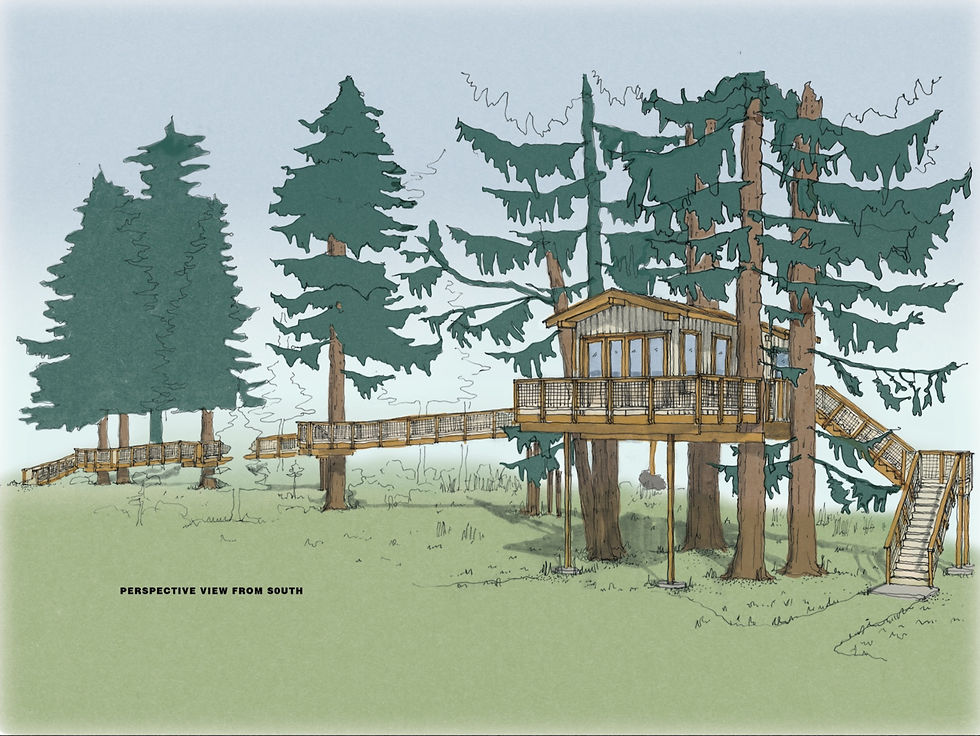Cows for Conservation: An Update on the Wolf Wise Communities Program
- Emily Evans
- Oct 30
- 4 min read
Updated: 6 days ago
By Amy Porter, Director of Conservation

In late September, Wolf Haven co-hosted its first experiential exchange through the Wolf Wise Communities Program - an initiative designed to foster dialogue and shared learning between wolf advocates and livestock producers.
At this first experiential exchange, six wolf advocates spent the day with Thurston County livestock producer, Jake Yancey, exploring his cattle operation and his efforts in conservation grazing (a land management approach that uses livestock to achieve conservation goals). Under the right conditions, conservation grazing can improve habitat quality, enhance biodiversity, and even support the recovery of native species.
A key goal of these experiential exchanges is to shift the narrative from "wolves vs. livestock" to one that reflects what we hear in our ongoing conversations with Washington’s ranching community: a growing interest in coexistence and stewardship of shared landscapes. Jake’s work exemplifies this shift.
For Jake, ranching is about respect - for the animals, the land, and the food his family provides to our local community. “People often assume that because cattle eventually go to harvest, there’s some emotional distance,” Jake reflected. “But in our family, nearly half our animals have a name and a story. We remember when they were born, what the weather was like, or how we nursed a struggling calf back to health.” It’s a way of life that he and his wife are proud to pass on to their daughters. A way of life grounded in empathy, gratitude, and care for the land.

Jake’s operation is unusual. When rising land prices and new development began reducing available pasture, Jake began to partner with conservation organizations. Many of these groups were spending significant time and resources manually clearing invasive vegetation and reducing wildfire risk. Jake saw an opportunity - use his cattle as a management tool to meet those same ecological objectives.

Today, Jake’s Tracking Y Ranch manages more than 150 head of cattle across 1,000 acres of leased land, about one-third privately owned and two-thirds held by conservation and land trust organizations. These partnerships are mutually beneficial: Jake is provided with grazing opportunities while his cattle help maintain healthy ecosystems.
One of Jake’s key collaborations is with the Center for Natural Lands Management (CNLM) at their Mima Creek Preserve, where we spent most of our experiential exchange day. Here, Jake’s cattle have been playing an important role in restoring habitat for the endangered Oregon spotted frog. This species has suffered dwindling populations due to habitat invasion by reed canary grass, a dense non-native plant that clogs wetlands and streams and overwhelms the short, native vegetation where the frogs lay their eggs.
Through carefully timed rotational grazing, Jake’s cattle spend just 2–3 weeks on site in late summer, opening the dense vegetation and helping to restore critical breeding habitat. Cattle leave the area before the fall rains return, and water quality testing at the site has confirmed that cow manure has not contaminated the water sources where Oregon spotted frogs lay their eggs. By the time the frogs return in February, the manure has naturally decomposed.
Oregon spotted frogs at CNLM's Mima Creek Preserve (credit Sanders Freed)
Beyond frog recovery, Jake’s operation also considers wildlife movement across the landscape. During the off-season, a 100-foot section of fencing is raised 12 feet high, creating a “wildlife bypass” that allows elk, deer, and bears to move freely through the area.
Working with landowners, agencies, and conservation groups, Jake grazes his cattle with multiple goals in mind:
produce sustainable grass-fed beef
protect fragile prairie ecosystems
expand the range of rare species
keep important lands from being usurped by development
Every site Jake grazes his cattle is managed with its own “prescription” tailored to the landowner’s conservation goals. Whether that's reducing fire fuels and invasive weeds; improving soil health; supporting native prairie plants like camas, golden paintbrush, and balsamroot; or enhancing habitat for frogs, butterflies, and birds.

After spending the day with Jake, our experiential exchange participants commented:
"Jake provided an enjoyable and informative experience that helped me better understand how livestock grazing can promote environmentally sound land stewardship through the use of Prescribed Conservation Grazing."
“It was so informational, and Jake is an amazing tour guide and rancher! I think the ability to have those conversations with producers is invaluable and essential to the goal of sustainable, long-term restoration of wolves on the landscape. More generally, it goes a long way to helping foster healthy community dynamics.”
“The experiential exchange program exposes people to the realities and challenges of farming, providing the rare opportunity to engage in-person and hear perspectives from those on the ground. Being able to ride along with Jake, to see his operations and the positive impact that sustainable grazing can have on the landscape, was inspiring; not to mention the opportunity to engage in constructive conversations around wolves in Washington and the benefits and challenges that come with them.”
As the population of wolves in Washington state grows and as individual wolves disperse, we can expect that wolf packs will soon be established in southwestern Washington, particularly in the South Cascades recovery region. Through the Wolf Wise Communities program, Wolf Haven is proactively engaging with our neighbors and community members to discuss what the natural return of wolves could mean for our region, acknowledging both the benefits and potential challenges.
This first Wolf Wise Communities experiential exchange offered a glimpse into what’s possible when we build trust, share stories, and explore common ground. It’s a model for how communities can move forward, together, toward a future where wolves and livestock both have a place on the landscape.
For more information about the Wolf Wise Communities program, please visit wolfhaven.org/wolfwise and click here to sign up for program email updates!











